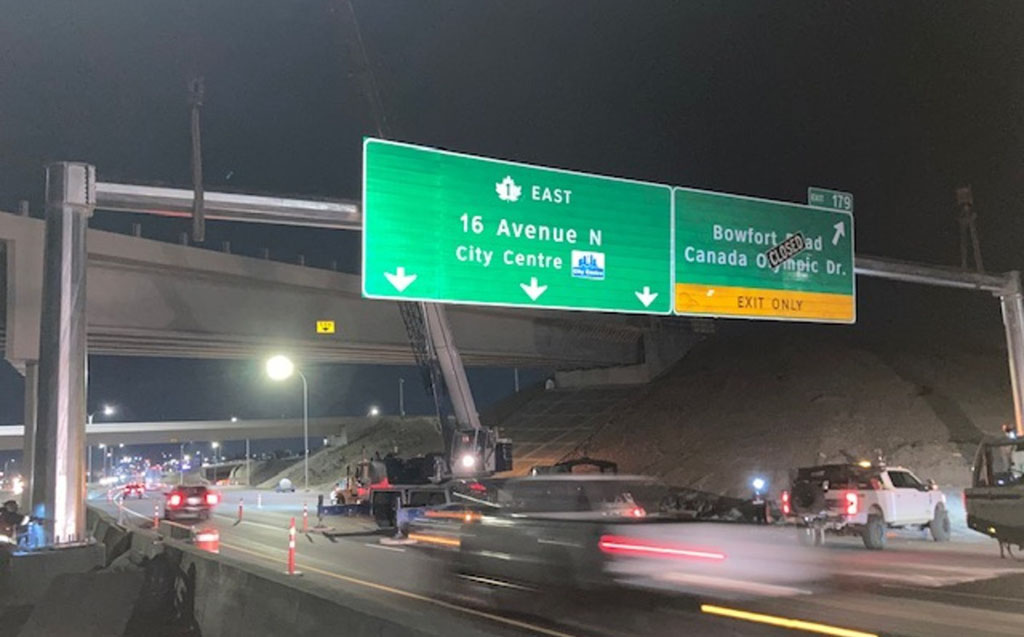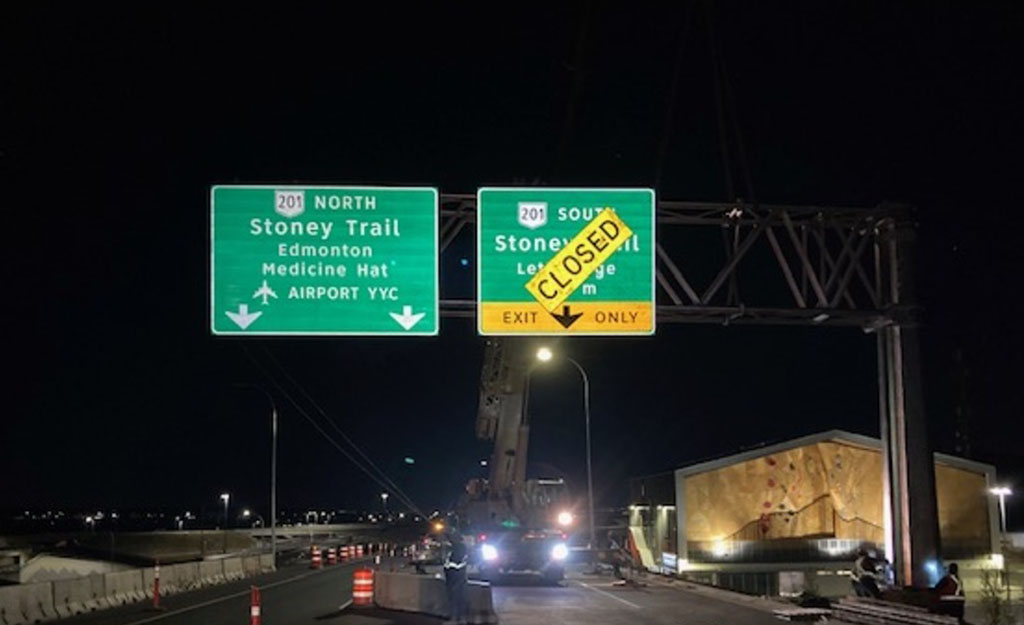Project Update

October 21, 2022
What’s Happening in Traffic This Week
Tonight: Sign Installations on Ramp from Westbound Trans-Canada Highway to Northbound Stoney Trail
From 7 p.m. tonight (Friday, October 21) until 5 a.m. tomorrow morning (Saturday, October 22), right lane closures are required on the ramp from westbound Trans-Canada Highway to northbound Stoney Trail.
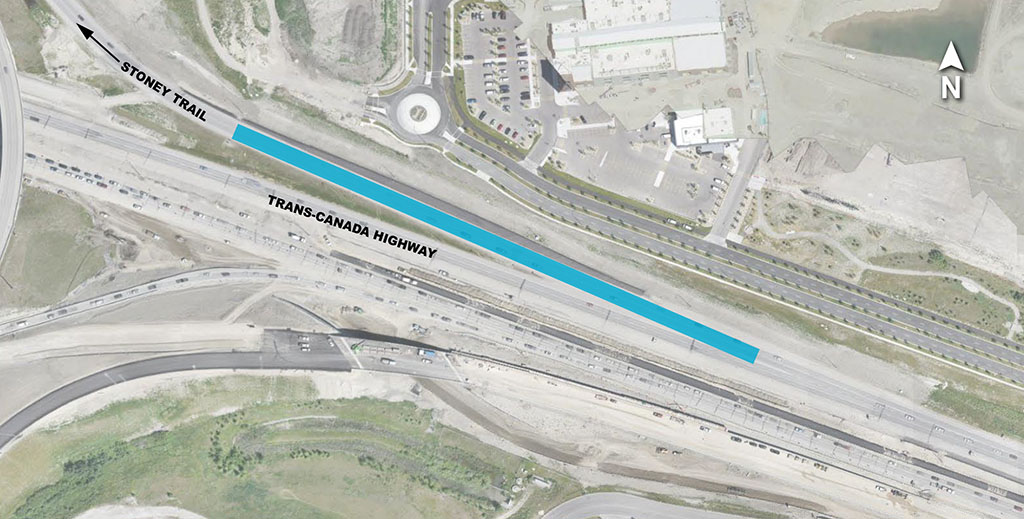
Tonight: Right Lane Closed on Eastbound Trans-Canada Highway Approaching Valley Ridge Boulevard N.W.
From 7 p.m. tonight (Friday, October 21) until 5 a.m. tomorrow morning (Saturday, October 22), the right lane on eastbound Trans-Canada Highway will be closed approaching Valley Ridge Boulevard N.W. for overhead sign installation.
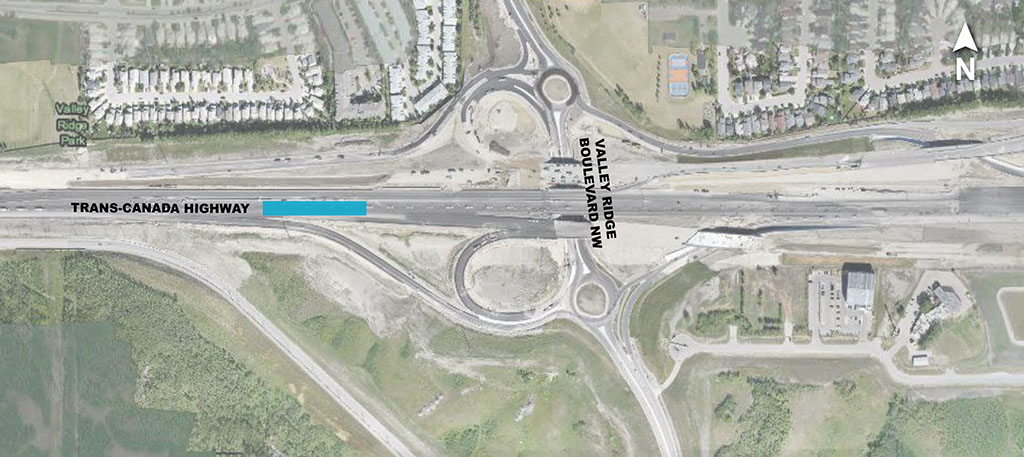
October 24: Single Lane of Alternating Traffic on Highway 8 – Delays Expected
Starting at 7 p.m. on Monday, October 24, 2022, Highway 8 will be reduced to a single lane of alternating traffic. Delays are expected.
This closure is needed to shift Highway 8 traffic onto the new eastbound lanes. All lanes are expected to re-open before rush hour on Tuesday morning (October 25, 2022). This detour will be operational for the remainder of construction.
Intermittent lane closures will be required in the week following the traffic shift to finalize the detour for winter.

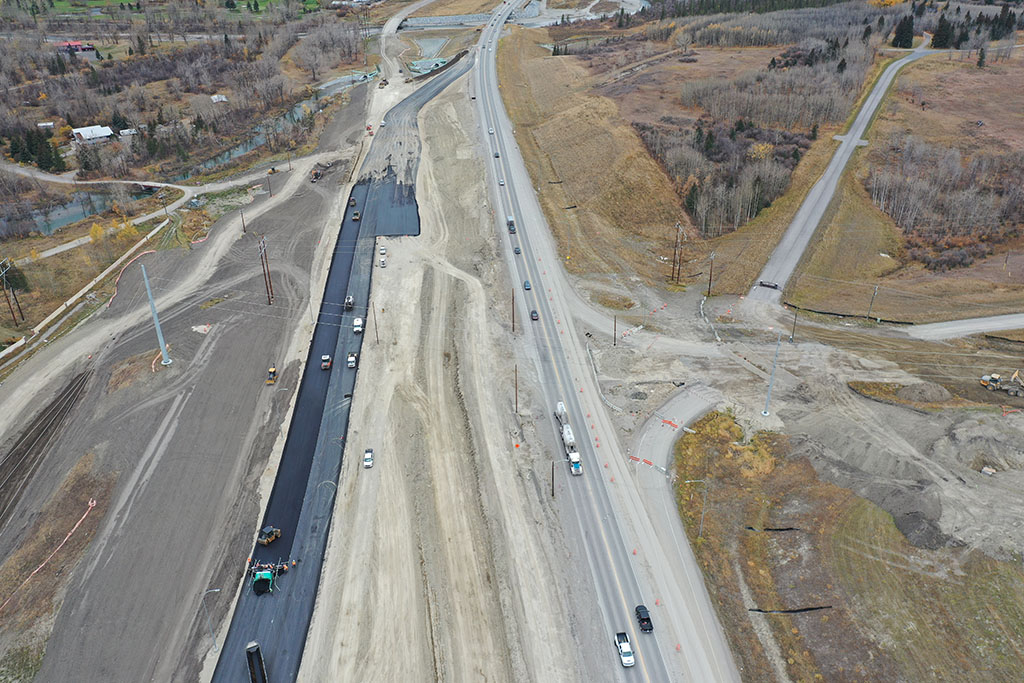
October 25: Single Lane on Eastbound Trans-Canada Highway at Stoney Trail – Delays Expected
From 9 a.m. to 3 p.m. on Tuesday, October 25, 2022, eastbound Trans-Canada Highway will be reduced to a single lane of traffic for bridge lighting installation. Delays are expected.
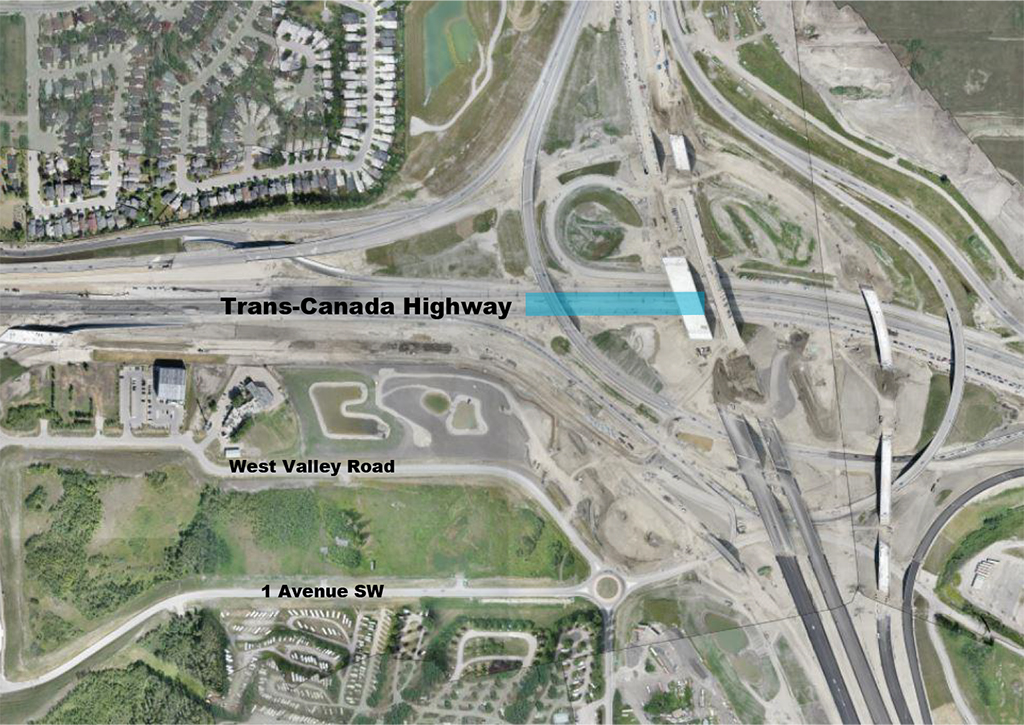
October 27-30: Overnight Lane Closures on Eastbound Trans-Canada Highway East of Old Banff Coach Road
Each night from Thursday, October 27 to Sunday, October 30, 2022, between 8:30 p.m. and 5 a.m., the inside (left) lane on eastbound Trans-Canada Highway will be closed for streetlight installation.
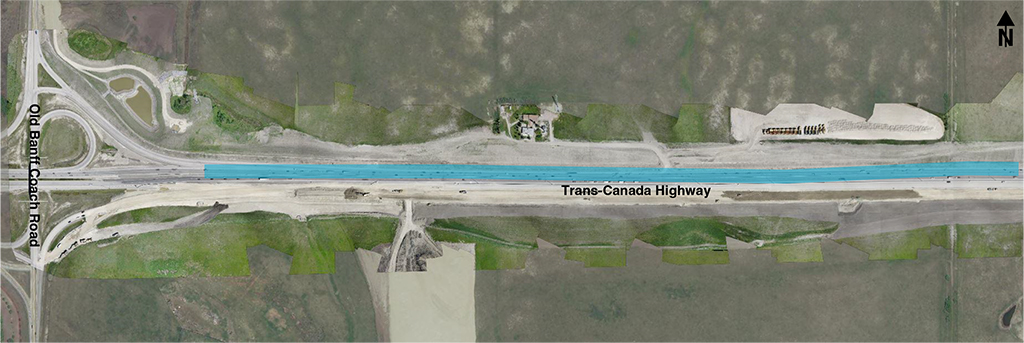
All work is weather dependant. Please check 511 Alberta and The City of Calgary’s traffic information map for up-to-date information on traffic detours and speed reductions. For all other project information, please visit westringroad.ca.
We appreciate your patience during construction.

Top Lift Paving
The increased frequency in recent lane closures is due, in part, to top lift paving. Deferred or final stage paving, as it is also known, refers to the surface layer of asphalt concrete pavement.
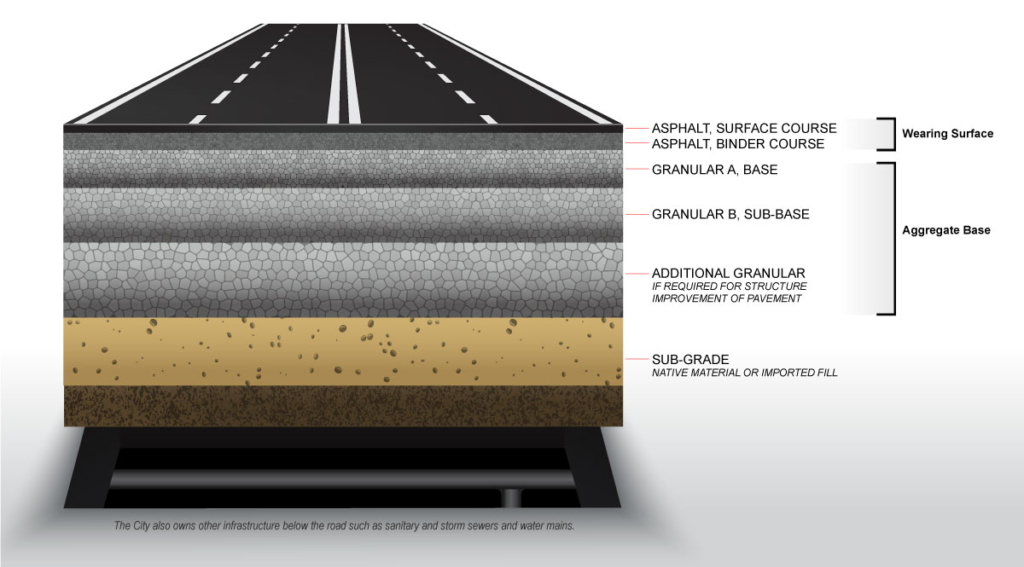
The top lift of pavement is typically deferred one or more years following original construction to allow time for settlement from utility installations and traffic. This way the top lift can address any deficiencies caused by settlement or construction traffic.
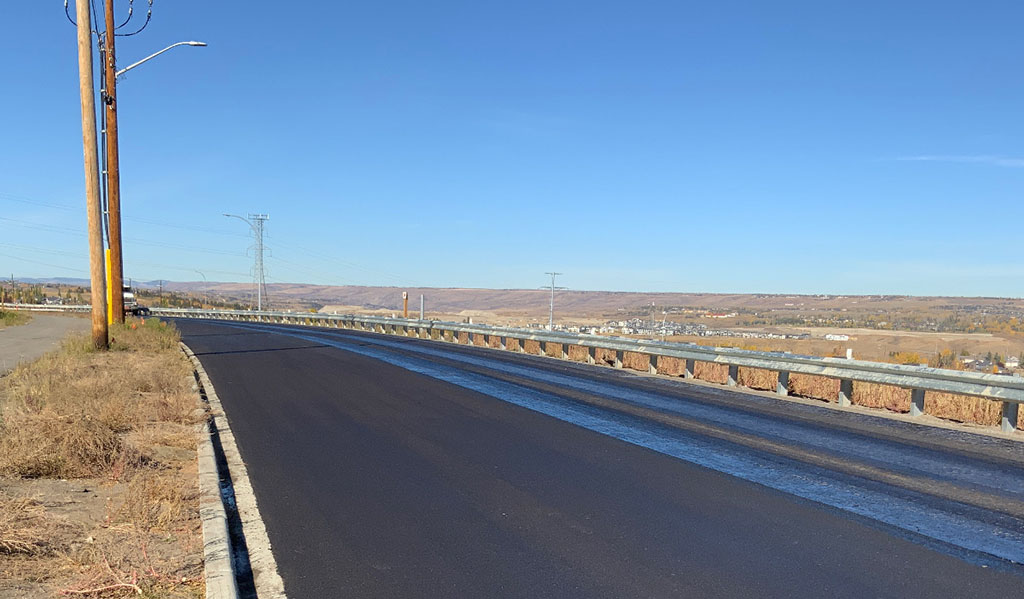
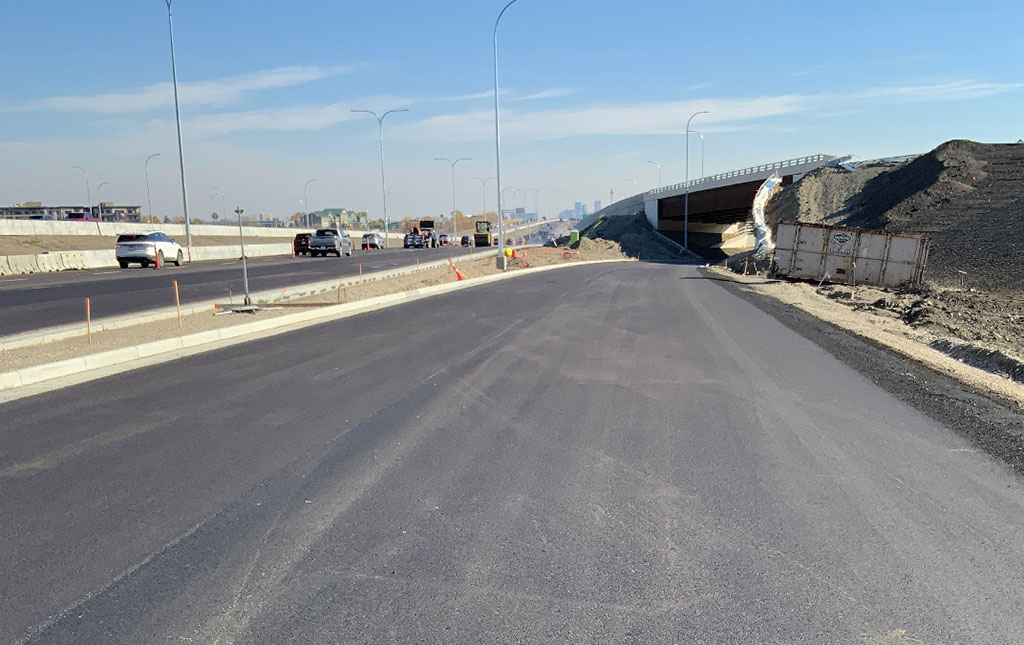
Northbound Stoney Trail to Westbound Trans-Canada Highway Ramp
When travelling from northbound Stoney Trail to westbound Trans-Canada Highway, you will cross over five bridges and under three. This particular ramp is also the third level on the interchange.
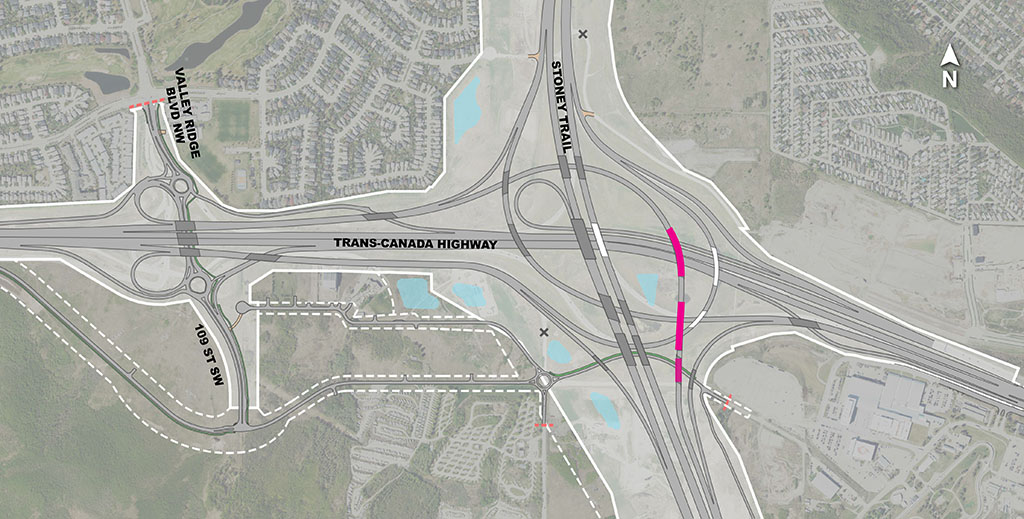
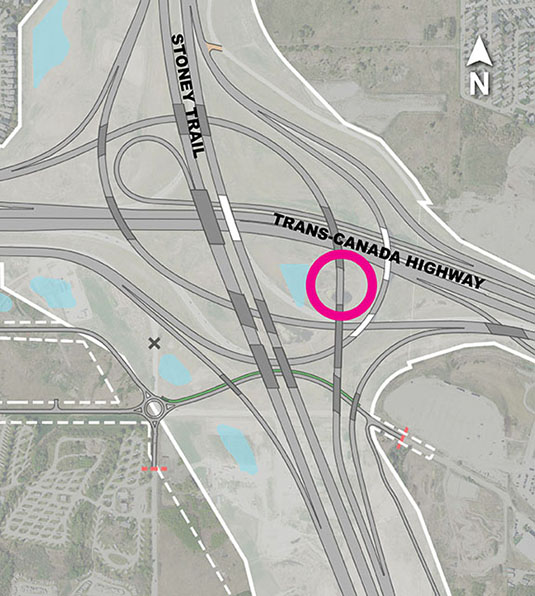
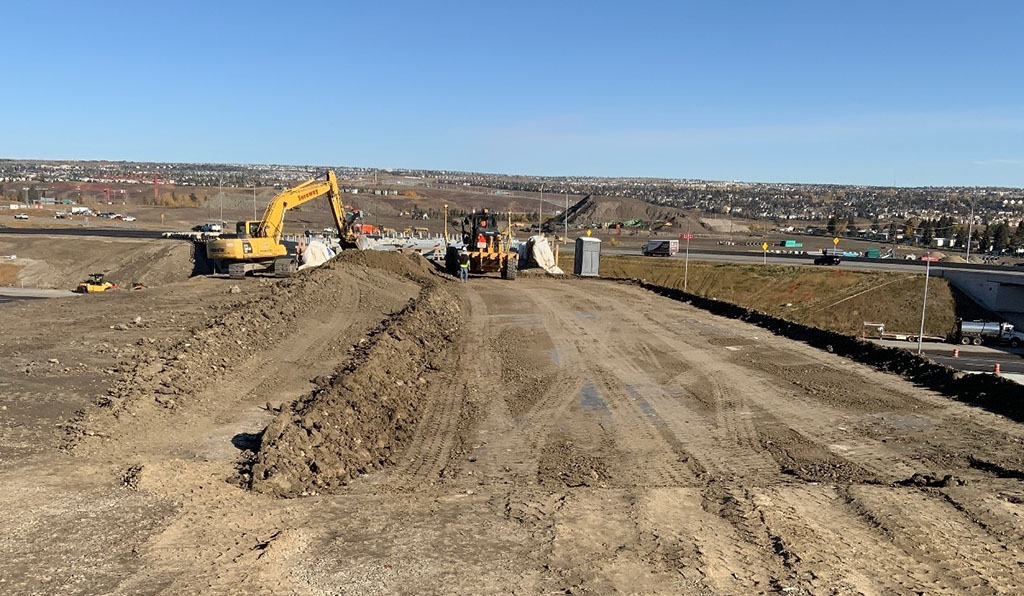
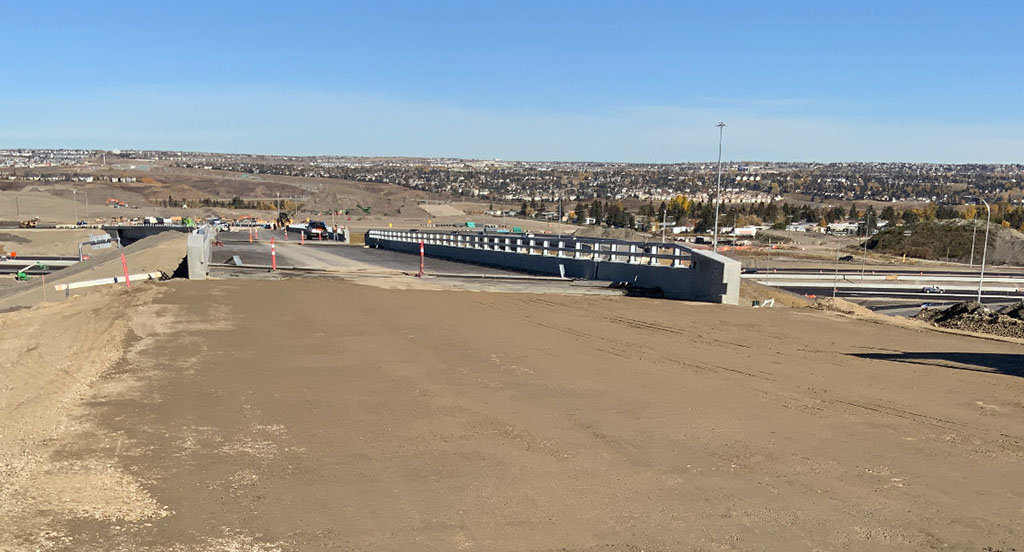
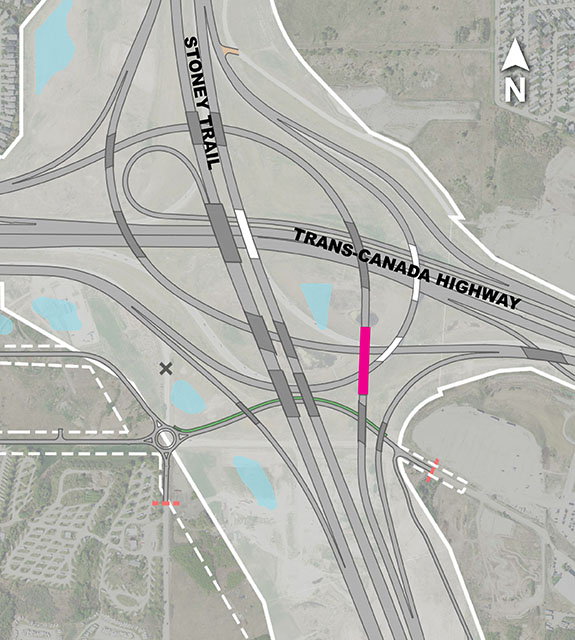
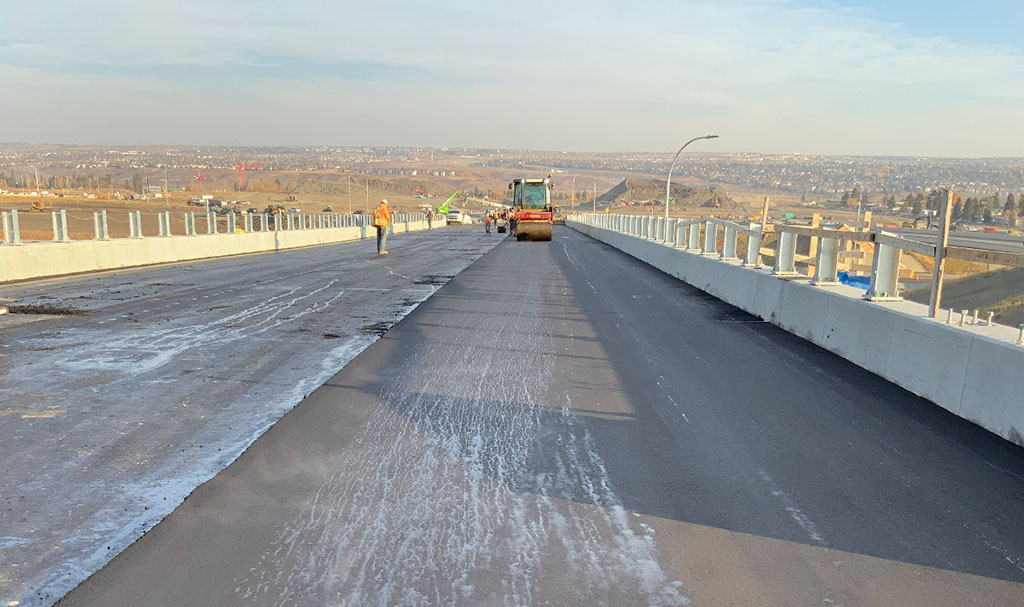

Clearview Highway Font
The Clearview font style, which includes the Clearview Highway font used on Alberta’s highway signs, was developed as an alternative to the Standard Highway Signs (SHS) Alphabets (Highway Gothic font).
Clearview font letters were developed as the result of decade of research to specifically address four issues with SHS alphabet legibility:
- Upgrade highway signs to accommodate the diverse visual acuity of drivers without increasing the capital letter height, overall length and height of word messages or the overall length and height of the signs themselves.
- Improve word pattern recognition by using mixed case words (SHS had only capital letters).
- Improve the speed and accuracy of destination recognition and legibility distance of word messages.
- Control or minimize halation – fog around the edges of a bright image – caused by high brightness retroreflective sign materials.
